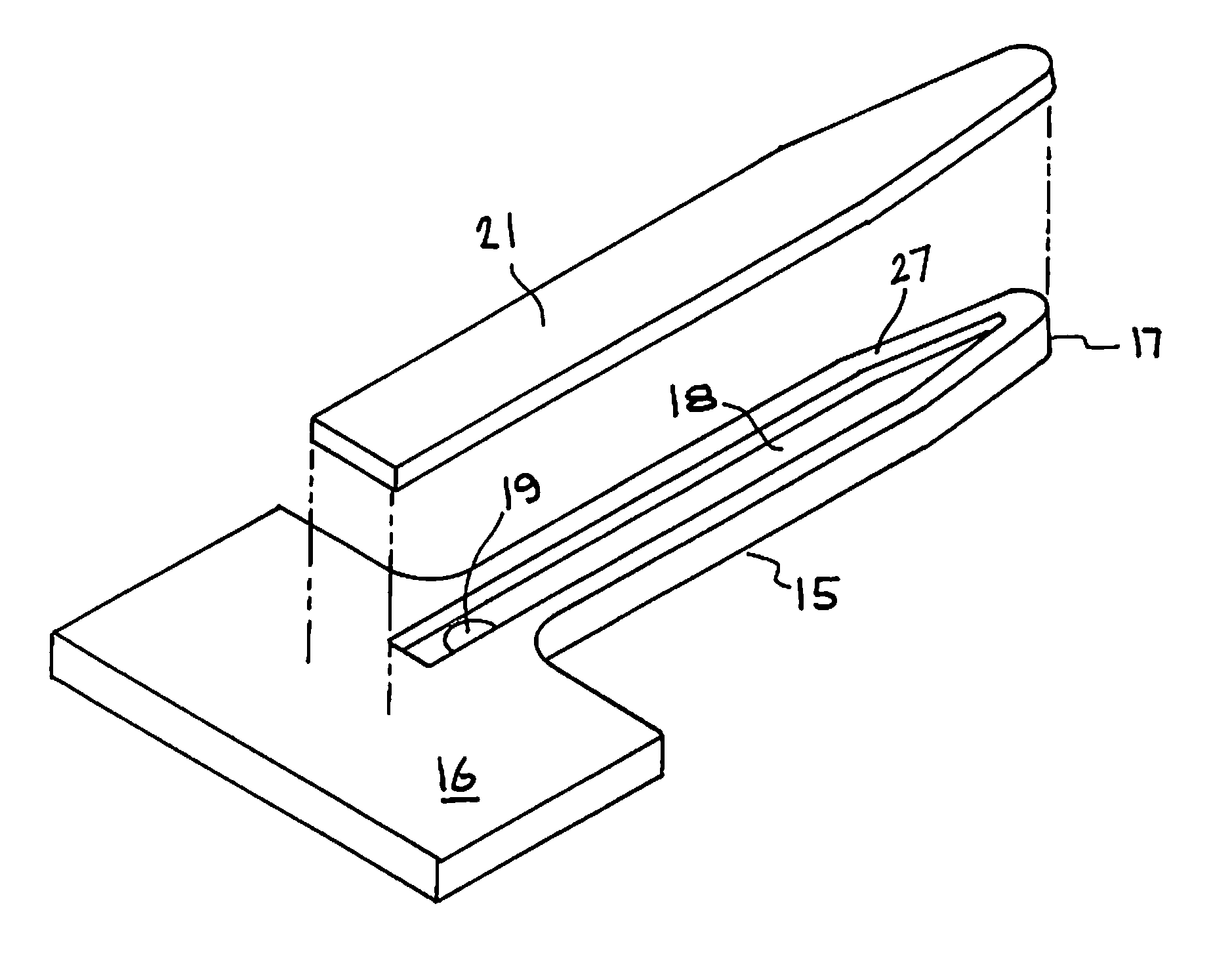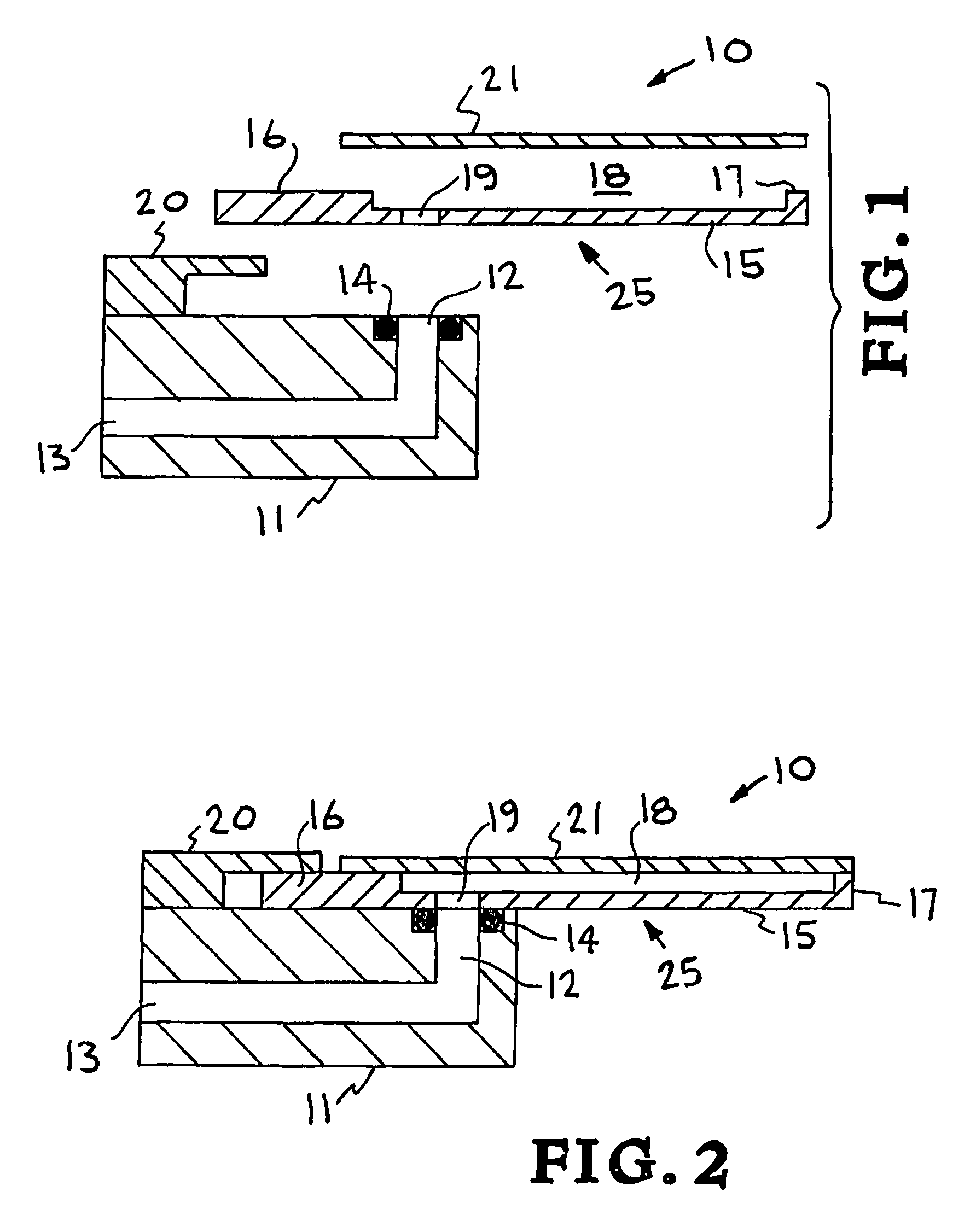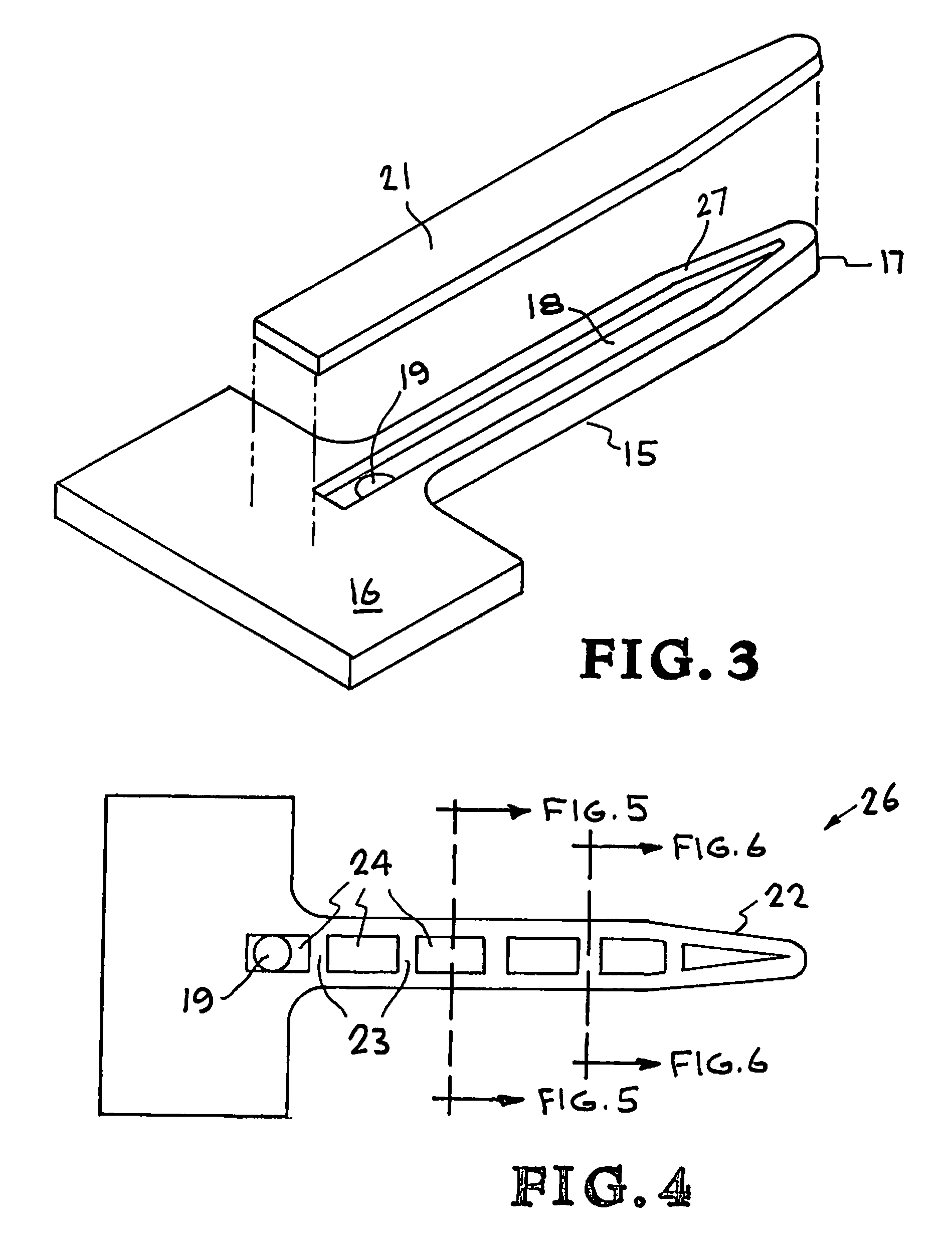Vacuum-actuated percutaneous insertion/implantation tool for flexible neural probes and interfaces
a flexible neural probe and percutaneous insertion technology, applied in the field of flexible neural probes and interfaces, can solve the problems of low mechanical stiffness, bending or buckling when percutaneously penetrated/inserted into tissue, complex mechanics of probe insertion, etc., and achieve the effect of simple and effectiv
- Summary
- Abstract
- Description
- Claims
- Application Information
AI Technical Summary
Benefits of technology
Problems solved by technology
Method used
Image
Examples
Embodiment Construction
[0029]Turning now to the drawings, FIGS. 1 and 2 show an example schematic embodiment of the flexible device insertion tool of the present invention, generally indicated at reference character 10, and comprising a rigid-body stiffener 25, and a vacuum connector 11 upon which the stiffener 25 may be mounted and secured to provide connection to a vacuum source (not shown). The insertion tool 10 is also shown with a flexible device 21 positioned against and temporarily connected to the stiffener 25 so as to be percutaneously insertable together with the stiffener.
[0030]As shown in FIGS. 1 and 2, the stiffener 25 has an elongated insertion shank 15, with a handle end 16, an opposite insertion end 17, and a channel 18 extending between the handle and insertion ends. In particular, the channel 18 is open on one side, with the opening forming a single elongated port along the side of the insertion shank. The stiffener also includes a connector port 19 that is in fluidic communication with ...
PUM
 Login to View More
Login to View More Abstract
Description
Claims
Application Information
 Login to View More
Login to View More - R&D
- Intellectual Property
- Life Sciences
- Materials
- Tech Scout
- Unparalleled Data Quality
- Higher Quality Content
- 60% Fewer Hallucinations
Browse by: Latest US Patents, China's latest patents, Technical Efficacy Thesaurus, Application Domain, Technology Topic, Popular Technical Reports.
© 2025 PatSnap. All rights reserved.Legal|Privacy policy|Modern Slavery Act Transparency Statement|Sitemap|About US| Contact US: help@patsnap.com



